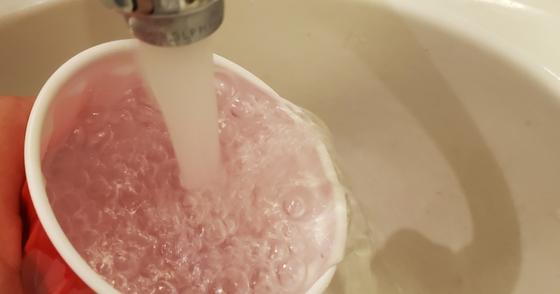At a work session last week, one of the items that Vance County commissioners discussed was a notice from the state’s division of water quality about two instances of excessive lead levels in county drinking water.
Although the source has not been determined to date, the county’s Special Projects Manager Frankie Nobles told the commissioners during that work session on Nov. 20 that proper notification about the lead levels is one point that the county must address by Wednesday, Nov. 29.
In addition to publishing and posting flyers, Nobles said additional information would be sent out in upcoming bills.
The county buys its water from the city, and Kerr Lake Regional Water System director Christy Lipscomb told WIZS News Monday by phone that she was unaware of the notice received by county staff.
Lipscomb said regulations state that water systems must perform 60 point of testing every three years to check lead and copper levels. And KLRWS is on what Lipscomb called a “diminished schedule” of only 30 tests every three years because there are so few problems with elevated levels.
The most recent testing took place in August, Lipscomb said. The result? Zero “hits,” or problems.
The two locations – one on Warrenton Road and one on Vicksboro Road – showed twice the allowable levels of lead at .030 MG/L. The threshold is .015 MG/L.
“The local health department regularly tests for child lead exposure in our child health clinics (it’s a simple blood test),” said Granville Vance Public Health Director Lisa Harrison. “If any levels are elevated, we have a team of one environmental health specialist together with one nurse who go together into the home to do further environmental testing,” Harrison told WIZS News in an email Monday.
Child health appointments can be made by calling the health department for those who wish to have their children tested. This can also be done easily at a local doctor’s office or pediatrician’s office. The GVPH team is notified regardless if there are concerns for any child tested for lead exposure, Harrison explained.
To learn more, visit https://www.gvph.org/services/environmental-health-services/childrens-environmental-health/
The source of the lead most likely is not from the water supply itself, but from pipes or other sources at the two individual locations. No details about the two addresses were shared at the work session.
Commissioner Dan Brummitt noted during the work session that the water system specs provided for construction without use of materials that contain lead, including the use of solder.
Water doesn’t naturally contain lead, but water can be contaminated with lead through lead pipes and other infrastructure used to bring water to individual households. According to the Centers for Disease Control and Prevention, the most common sources of lead in drinking water are lead pipes, faucets and plumbing fixtures. Certain pipes that carry drinking water from the water source to the home may contain lead. Household plumbing fixtures, welding solder, and pipe fittings made before 1986 may also contain lead.
Find more information at https://www.cdc.gov/nceh/lead/prevention/sources/water.htm
Click Play
